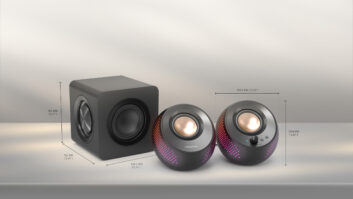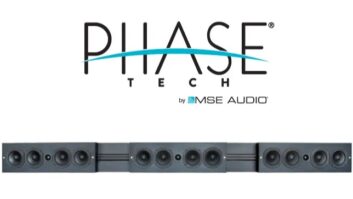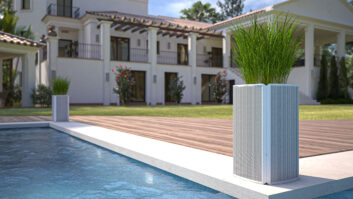OWINGS MILLS, MD. — Definitive
Technology plans to introduce three
more super-thin speakers later this year
to join the 1.5-inch-deep Mythos XTR-
50, a $699 two-way LCR designed to
complement ever-thinner LED-backlit
LCD TVs, said Paul DiComo, and product
development senior VP.
The 27-inch by 6-inch by 1.5-inch
XTR-50, sized for use with 46- to 55-inch
fl at-panel TVs, can be mounted horizontally
or vertically on walls or stands.
It’s positioned as the market’s thinnest
component speaker that be placed up
against a wall.
The additional models will be positioned
above and below the current
model in price point and length, but like
the XTR-50, they will be only 1.5-inches-
deep at their maximum depth at the
center of their enclosures, which get
thinner toward their edges.
Definitive will introduce the new models
at the CEDIA Expo in September
and ship them later in the year.
Strongly rising sales of LED-backlit
LCD TVs are creating new opportunities
to improve TV sound quality, especially
when the TV speakers fire downward,
DiComo explained.
A number of Definitive dealers have already
begun demonstrating the XTR-50
speakers with TVs, and DiComo said he
expects dealers who do so will enjoy greater
volume than if they display the speaker
with other speakers in their stores.
Definitive thinned out the XTR-50 without
thinning out the sound by using dynamic
drivers, which use a voice coil sitting
in a magnetic field, instead of turning
to flat-panel drivers, which DiComo said
don’t perform as well. Definitive also
avoided electrostatic and ribbon technology
for multiple reasons, including
expense and a bipolar-radiation pattern
that prevents them from being placed up
against a wall, DiComo said.
To get dynamic drivers into a 1.5-inchdeep
chassis, Defi nitive turned to dome
drivers instead of traditional cone drivers,
enabling the company to place the voice
coil inside the dome to reduce depth, Di-
Como said. Another strategy was using
small-but-strong neodymium magnets
and allowing the magnets to protrude
through the enclosure’s back panel while
remaining flush with the back of the enclosure.
A gasket around the magnet
prevents air leakage and conducts heat
to the aluminum back panel, turning the
back panel into a heat sink.












